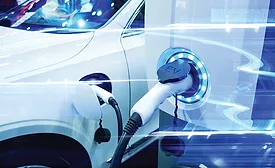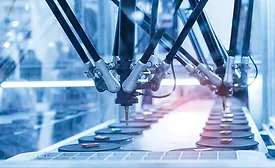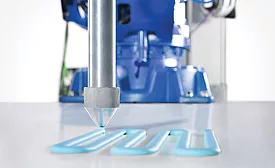Home » Publications » Adhesives & Sealants Industry
Adhesives & Sealants Industry

October 2019
Cover Story
Back to TopNew adhesives, sealants, and foams can address the thermal and weight challenges of modern high-voltage vehicle batteries.
Read More
Features
Back to TopWhat Are Structural Adhesives?
Structural adhesives can offer stronger bonds than mechanical fasteners.
October 10, 2019
Assembling Strong Bonds: 2019 ASSEMBLY Show
The ASSEMBLY Show will provide thousands of attendees with numerous opportunities to learn from industry experts, explore the latest products and technologies, and network throughout the three-day event.
October 14, 2019
Qualifying an XYZ Robotic Adhesive Application for Freezer Assembly
An appliance manufacturer successfully upgraded its freezer assembly process from an outdated XY-applied hot-melt pressure-sensitive adhesive to a fully automated XYZ application.
October 17, 2019
Cultivating Leadership in the Adhesive and Sealant Industry
Key leaders in the adhesive and sealant industry will come together to cultivate their skills at the ASC's 2019 Executive Leadership Conference.
October 8, 2019
High-Speed Adhesive Dispensing for High-Voltage Batteries
The high viscosity and high proportion of abrasive fillers in the pastes, adhesives, and sealants used to assemble high-voltage batteries requires specialized dispensing and filling technologies.
October 4, 2019
Advancing Adhesives
Advances Toward Non-Yellowing Optically Clear Silane-Modified Polymer-Based Adhesive Formulations
Using hydrophobic surface-treated fumed silica in combination with a novel non-yellowing amino-functional silane adhesion promoter leads to an optically clear silane-modified polymer-based adhesive system with superior color stability.
October 1, 2019
Columns
Back to TopEditor's Memo
Assembly (Adhesives) Required
Most of the "things" we use every day are not born, they are made, and assembly is definitely required.
October 1, 2019
Ask Dr. Dave
What cure systems are available for UV adhesives?
UV adhesives can be cured using free radicals for acrylic adhesives or cations for cationic monomers.
October 24, 2019
Keep the info flowing with our newsletters!
Get the latest industry updates tailored your way.
JOIN TODAY!Copyright ©2025. All Rights Reserved BNP Media.
Design, CMS, Hosting & Web Development :: ePublishing










